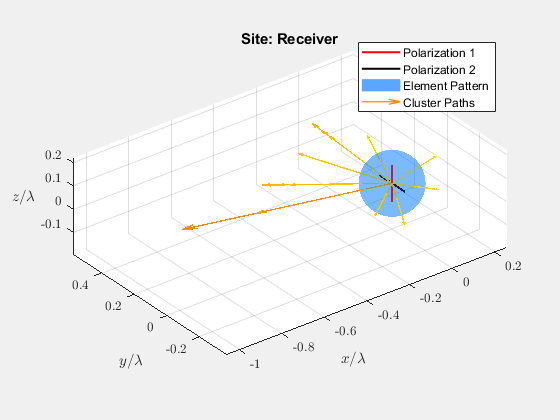displayChannel
Visualize and explore 3-D MIMO fading channel model characteristics
Description
fig = displayChannel(lte3D)
fig = displayChannel(lte3D,Name,Value)'LinkEnd','Tx' specifies
visualization at the transmitter end only.
Examples
Input Arguments
Name-Value Arguments
Output Arguments
References
[1] 3GPP TR 36.873. “Study on 3D channel model for LTE.” 3rd Generation Partnership Project; Technical Specification Group Radio Access Network; Evolved Universal Terrestrial Radio Access (E-UTRA). URL: https://www.3gpp.org.
[2] 3GPP TR 38.901. “Study on channel model for frequencies from 0.5 to 100 GHz.” 3rd Generation Partnership Project; Technical Specification Group Radio Access Network. URL: https://www.3gpp.org.
Version History
Introduced in R2020b


